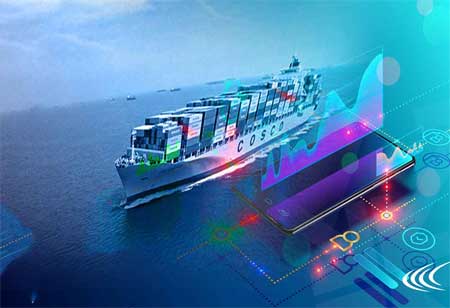THANK YOU FOR SUBSCRIBING
THANK YOU FOR SUBSCRIBING

By
Logistics Transportation Review | Monday, March 31, 2025
Stay ahead of the industry with exclusive feature stories on the top companies, expert insights and the latest news delivered straight to your inbox. Subscribe today.
The systems utilize sensors, IoT devices, and advanced software to monitor and control real-time rigging operations.
FREMONT, CA: Rigging technology is essential in several sectors, such as transportation, entertainment, seafaring, and construction. The demand for increased efficiency, safety, and accuracy drives the evolution of rigging technology and the industries. The incorporation of intelligent systems is the most crucial development in rigging technology. Operators can improve safety and make well-informed decisions using data on load weight, tension, and environmental factors provided by innovative rigging systems. For example, intelligent rigging systems in construction can lower the risk of accidents by warning operators of possible overloads or ecological hazards.
Automation and remote control are transforming rigging operations by reducing the need for manual intervention and enhancing precision. Automated rigging systems can perform repetitive tasks accurately, while remote-controlled systems allow operators to manage rigging equipment from a safe distance. It is particularly beneficial in hazardous environments, such as offshore drilling or high-rise construction, where human safety is a concern. Remote-controlled rigging improves operational efficiency by allowing for continuous operation without frequent breaks.
Materials like carbon fiber, high-performance synthetic fibers, and advanced alloys create rigging, durable and easy-to-handle rigging equipment. The materials reduce the overall weight of the rigging system, making it easier to transport and set up while maintaining high load-bearing capacities. Innovation is crucial in industries like entertainment, where rigging equipment needs to be frequently moved and reconfigured. Customization enhances the performance and safety of rigging systems by ensuring that each component fits perfectly within the overall system.
3D printing can expedite production, reducing lead times and costs associated with traditional manufacturing. Safety is a paramount concern in rigging operations, and recent innovations are focused on improving safety standards. Advanced safety mechanisms, such as automatic overload protection, fail-safe devices, and real-time monitoring systems, are being integrated into rigging equipment. The innovations help prevent accidents by providing immediate feedback and automatic responses to hazardous situations. Automatic shut-off systems can halt operations if a load exceeds the safe weight limit, preventing equipment failure and potential injuries.
Training rigging personnel is critical to ensuring safe and efficient operations. AR and VR technologies revolutionize training programs by providing immersive, hands-on experiences without the associated risks. It can simulate real-world scenarios, allowing trainees to practice rigging techniques and emergency responses in a controlled environment. Training enhances skill acquisition and retention, leading to more competent and confident operators. Sustainability is becoming a key consideration in rigging technology. Energy-efficient rigging systems are being developed to reduce the environmental impact of operations.
Innovations such as electric-powered hoists, regenerative braking systems, and energy-efficient motors are being adopted to lower energy consumption and minimize carbon footprints. The systems benefit the environment and reduce operational costs by decreasing energy usage. Integrating rigging technology with BIM allows for more precise planning and execution of rigging operations. BIM can provide detailed information about the structure, enabling professionals to design and implement rigging plans that minimize risks and optimize efficiency. The integration enhances collaboration between different teams and ensures that rigging operations are seamlessly incorporated into the project workflow.
I agree We use cookies on this website to enhance your user experience. By clicking any link on this page you are giving your consent for us to set cookies. More info





